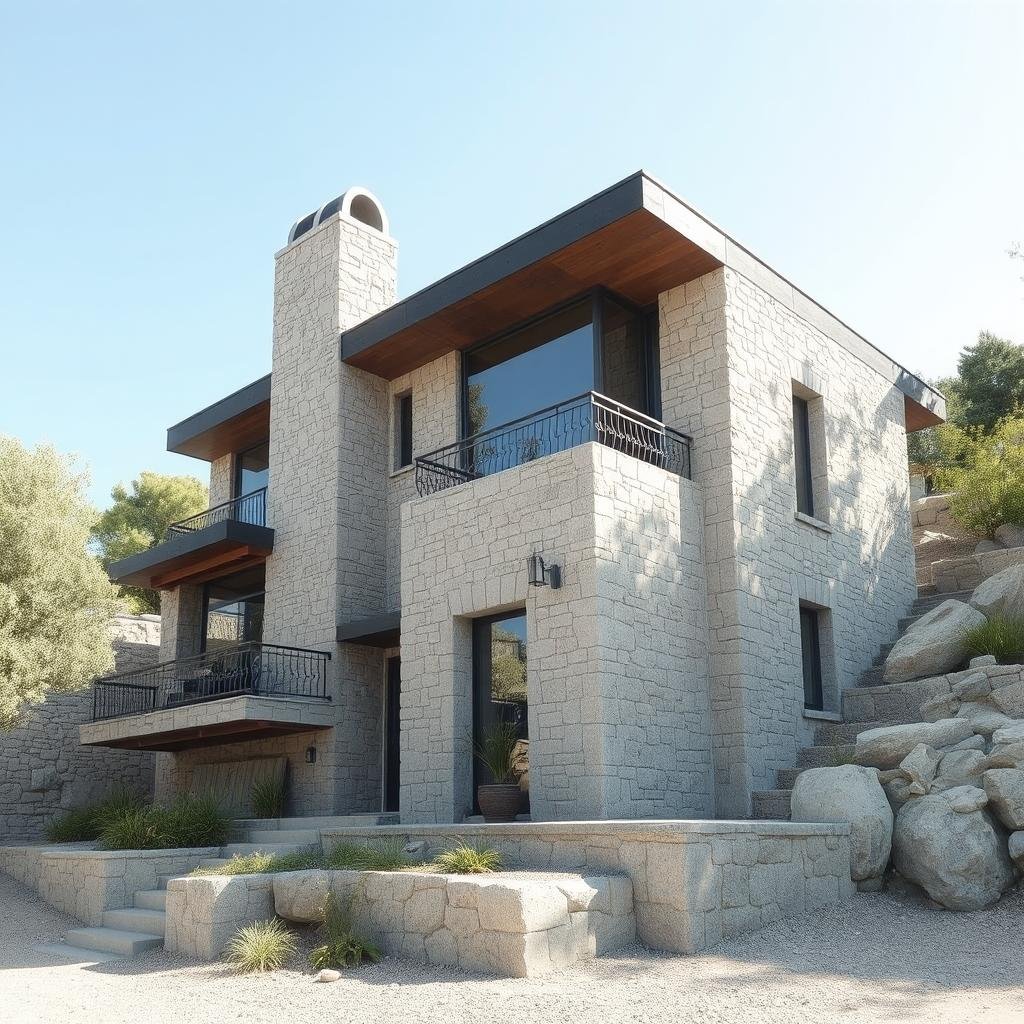Historically speaking, stone as a building material has served for thousands of years. Stone reflects an impression of strength, durability, and natural beauty.
On the other hand, there appears to be an almost universal fallacy that immediately links stone buildings with seismic vulnerability.
This article discusses safety in building with stone in earthquake-prone areas, looking at such aspects as benefits, risks, and best practices for construction.
Please also read: 30+ Best Places to Buy Multi-Family Properties in 2024

Advantages of Using Stone in Construction
There are numerous reasons why stone is an excellent building material. A few of the favorable reasons include the following:
- Durability: Stone is highly resilient and able to resist the changes that time, weathering, and erosion bring on; hence, it is long-lasting in construction.
- Insulation: Stone is a very good insulator against thermal and acoustic elements. This in essence means that buildings made of stone remain cool during summer and warm during winter, while incidents of noise transmissions are immensely reduced.
- Aesthetic appeal: The natural beauty of the stone and its versatility make it very popular for both residential and commercial buildings. It can be used to create everything from traditional to modern architectural styles.
Understanding Earthquake Risks and Building Codes
Before describing the details of construction techniques that may be used for stone buildings in earthquake zones, some information on seismic hazards and building codes related to earthquake-resistant construction has to be given.
Seismic Hazard: Fundamentally, earthquakes result from the movement of tectonic plates, causing a release of energy. The intensity and frequency vary between regions. Building codes in earthquake-prone areas are designed to minimise the damage from seismic events.
Building codes: Building codes are instrumental in ensuring that structures in earthquake-prone areas are safe. Building codes spell out the design needs, construction standards, and specifications for materials that guarantee seismic improvement.
Seismic design standards: Seismic design standards incorporate the principles of engineering and seismology to ensure that the buildings can bear the forces of earthquakes. The base isolation and energy dissipation devices are some of the seismic design standards that allow structural elements reinforcement.

Construction Techniques for Stone Buildings in Earthquake Zones
While it is possible to use stone safely in earthquake-prone areas, many proper construction techniques must be observed to minimise damage. Some of the key considerations are:
Foundation Design: A strong and stable foundation is highly required to bear the weight of a stone building and seismic forces. Foundations shall be designed to distribute the load and provide resistance against lateral movement.
Wall Construction: Several methods for constructing stone walls may be employed in earthquake-prone countries. Some common methods include:
- Dry-stacking: This method concerns the placing of stones without mortar. Among the appropriate methods for making earthquake-resistant walls, dry-stacking is considered to allow for some flexibility and movement during seismic actions.
- Mortar-jointing: In mortar-jointed walls, the stones are bonded by mortar. The type and strength of mortar represent one of the most important key factors for the seismic resistance of the wall.
- RC masonry: The method in which reinforcement steel bars are placed in the mortar joints to give further strength and ductility to the wall is called reinforced masonry. It is very commonly used in earthquake-prone areas to give added seismic resistance to stone buildings.
Seismic reinforcement: Besides reinforced masonry, seismic reinforcements may also be considered, such as providing base isolators or energy dissipation devices. Such a system could decouple the building from ground motion, reducing the forces transmitted to the structure.
Design of Roof: The roof of the stone building is to be lightweight and flexible to distribute less load on the walls in case of an earthquake. This can be done by using lighter materials like wood or metals on the frame.
Case Studies: Successfully Constructed Stone Buildings in Earthquake-Prone Areas
There are numerous examples to prove how well stone buildings can behave during earthquakes.
These case studies have been presented in a manner that proper design, construction technique, and seismic reinforcement could be identified.
Example 1: The Cathedral of Notre Dame, Paris, France, is an old stone building that has survived many earthquakes for many centuries. Its thick walls, reinforced structure, and flying buttresses have been responsible for its strength.

Example 2: Yet another testament to the survival of a stone building through seismic activity is the Great Mosque of Kairouan in Tunisia. The thick-walled, reinforced arches and seismic-resistant design features in this mosque have helped it to stand intact.

Some Misconceptions Regarding Stone Construction in Earthquake Zones
Despite the adequate performance of most stone buildings during earthquakes, several misconceptions are still widespread concerning how unsafe stone masonry construction can be in these regions.
Myth 1: Stone buildings are inherently more vulnerable to earthquakes. That isn’t necessarily so. If appropriately designed and using proper construction techniques, stone buildings can be just as resistant to earthquakes as other building types.
Myth 2: Traditional methods of constructing in stone are always safe. Although traditional methods may be applicable, modern seismic design standards and construction methods provide improved protection against earthquakes.
Myth 3: seismic retrofitting of a stone building cannot be done. Retrofitting itself is one of the effective methods by which seismic resistance can be increased in those stone buildings that have already been constructed. Base isolation, energy dissipation devices, and reinforced masonry are some of the techniques employed to enhance performance.

Conclusion: Is building with stone in earthquake-prone areas really safe?
It is, therefore, not unsafe intrinsically to build with stone in earthquake-prone areas.
Safety can be guaranteed if the risks are understood and the appropriate building code followed with proper construction techniques applied.
Advantages associated with the use of stone include its durability, insulation, and aesthetic appeal, hence making it feasible for seismic zone construction.
FAQ’s on Building with Stone in Earthquake-Prone Areas
1. Is stone safe for earthquake-prone areas?
Yes, with proper design and construction.
2. Benefits of stone in earthquake-resistant buildings:
Durability, insulation, aesthetic appeal.
3. Risks of stone in earthquake-prone areas
Minimized with proper techniques, codes, and reinforcement.
4. How to ensure earthquake-resistant stone buildings:
Consult an engineer, follow codes, and use reinforced masonry and seismic reinforcement.
5. Best construction techniques for stone in earthquake zones:
Reinforced masonry, seismic reinforcement, foundation design, lightweight roof.
6. Can existing stone buildings be retrofitted?
Yes, through base isolation, energy dissipation devices, and reinforced masonry.
7. Building codes and standards for stone in earthquake zones:
Adhere to local codes for design, construction, and materials.
8. Examples of successful stone buildings in earthquakes:
Notre Dame, Kairouan Mosque.
9. Cost of stone construction in earthquake-prone areas:
May be higher due to seismic reinforcement, but long-term benefits can offset costs.
10. Role of seismic reinforcement in stone buildings:
Essential for improving earthquake resistance involves incorporating steel or other materials.
Please Read: How to Start a Real Estate Crowdfunding Business in 2024 – A Step-by-Step Guide





